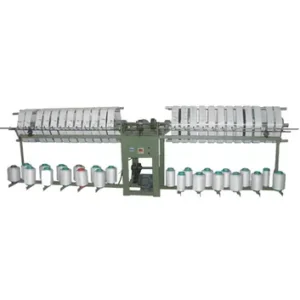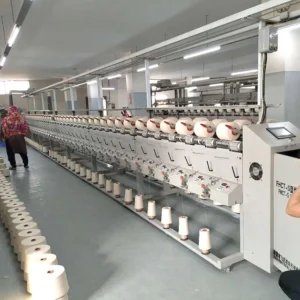The textile industry has long relied on chemicals for dyeing, finishing, and processing fabrics. However, growing environmental concerns and stricter regulations are pushing manufacturers to find smarter ways to reduce chemical usage.
This guide explores practical, cost-effective methods to minimize chemical dependence while maintaining quality – benefiting both your business and the planet.
Why Should Manufacturers Reduce Chemical Usage?
Environmental Protection Benefits
Reducing chemical runoff is crucial for protecting local waterways and ecosystems.
Chemicals used in textile production can leach into rivers and lakes, harming aquatic life and disrupting natural habitats.
Minimizing chemical usage, manufacturers can significantly lessen their environmental footprint, contributing to healthier ecosystems and cleaner water sources.
Cost Savings Potential
Lowering chemical usage translates directly into cost savings for manufacturers.
By using fewer chemicals, companies can reduce the expenses associated with purchasing, storing, and disposing of these substances.
Additionally, less chemical waste means lower waste disposal costs.
This reduction not only improves profit margins but also allows for reinvestment in more sustainable practices and technologies.
Meeting Consumer Demand
Today’s consumers are increasingly eco-conscious and prefer products that align with their values.
Textiles made with fewer chemicals appeal to this demographic, driving demand for sustainable products.
Adopting practices that reduce chemical reliance, manufacturers can enhance their marketability and attract a loyal customer base concerned about environmental impact.
Compliance with Regulations
The global textile industry faces stringent regulations regarding chemical usage.
Many countries are implementing stricter standards to safeguard public health and the environment.
Reducing chemical dependency is no longer just a proactive measure; it’s becoming a legal requirement.
Manufacturers who comply with these regulations not only avoid potential fines but also position themselves as responsible industry leaders.
How Can Pre-Treatment Processes Be Optimized?
Improved Fabric Preparation
Optimizing fabric preparation is essential for minimizing further chemical use.
Thorough cleaning and scouring of fabrics before dyeing or finishing can significantly reduce the amount of chemicals needed in subsequent processes.
Ensuring that fabrics are free of impurities and residues, manufacturers can enhance dye uptake and improve overall quality without relying on additional chemical treatments.
Enzyme-Based Pre-Treatment
Incorporating biological enzymes in pre-treatment processes offers an effective alternative to harsh chemical scouring agents.
Enzymes can break down specific impurities at lower temperatures and with less water than traditional methods.
This not only reduces chemical usage but also lowers energy costs, making the process more sustainable and cost-effective while maintaining high-quality standards.
Plasma Treatment Technology
Plasma treatment is an innovative dry process that modifies the surface properties of fabrics without the use of wet chemicals.
This technology can enhance dye absorption and improve fabric performance by creating a more receptive surface.
Since it eliminates the need for water and harmful chemicals, plasma treatment represents a significant advancement in sustainable textile processing.
And More:
Innovative Strategies for Reducing Water Usage in Textile Manufacturing
What Are the Best Low-Chemical Dyeing Options?
High-Exhaustion Dyes
High-exhaustion dyes are specially formulated to achieve deeper color penetration in fabrics, which means that less dye is wasted during the dyeing process.
These dyes are designed to bond more effectively with fibers, leading to brighter and more vibrant colors with lower overall chemical usage.
Optimizing the dyeing process, manufacturers can enhance colorfastness and reduce the need for post-dye treatments, ultimately resulting in a more sustainable approach
Cold Pad-Batch Dyeing
Cold pad-batch dyeing is an innovative method that allows for dyeing at room temperature, significantly saving energy and reducing chemical usage.
This technique involves applying dye in a padded form to the fabric, allowing it to soak in over time.
Because the process does not require heating, it minimizes energy consumption and reduces the environmental impact associated with traditional dyeing methods, making it an eco-friendly choice for manufacturers.
Digital Printing Technology
Digital printing technology revolutionizes the dyeing process by applying color directly to the fabric where needed, thus eliminating the need for excessive dye baths.
This precision reduces dye waste and minimizes the chemicals used in the process.
Additionally, digital printing allows for greater design flexibility and customization, enabling manufacturers to produce smaller runs without the need for large setups.
This efficiency not only conserves resources but also meets the growing demand for unique and personalized textile designs.
How Can Water Recycling Reduce Chemical Needs?
Closed-Loop Water Systems
Closed-loop water systems are an effective way to recycle process water used in textile manufacturing.
Reusing water within the production cycle, manufacturers can significantly reduce the need for fresh water and the chemicals that come with it.
This system minimizes wastewater generation and ensures that chemical consumption is lowered, contributing to a more sustainable operation while maintaining production efficiency.
Counter-Current Washing
Counter-current washing is a method that enhances the efficiency of chemical removal during the washing process.
Using progressively cleaner water at each stage of washing, manufacturers can maximize the extraction of residual chemicals from fabrics.
This technique not only reduces the amount of fresh water needed but also ensures that less chemical residue remains on the fabric, leading to a more environmentally friendly product.
Advanced Filtration Systems
Implementing advanced filtration systems allows manufacturers to remove chemicals from wastewater effectively, enabling the reuse of treated water in production.
These systems utilize various technologies, such as membrane filtration and activated carbon, to purify water before it’s recirculated.
Investing in these filtration technologies, manufacturers can significantly reduce their chemical footprint, lower disposal costs, and contribute to a circular economy in textile production.
And More:
- Innovative Strategies for Reducing Water Usage in Textile Manufacturing
- How Can Textile Factories Reduce Their Carbon Footprint?
What Natural Alternatives Can Replace Chemicals?
Plant-Based Mordants
Plant-based mordants, such as tannins derived from tree bark or leaves, can effectively replace traditional metal-based fixatives in dyeing processes.
These natural mordants bond dyes to fibers without the toxicity associated with synthetic alternatives.
Using plant-based options, manufacturers can achieve vibrant colors while promoting sustainability and reducing environmental impact.
Additionally, these mordants are biodegradable and less harmful to aquatic ecosystems, making them an excellent choice for eco-conscious production.
Bio-Polishing with Enzymes
Bio-polishing involves using gentle biological treatments, such as enzymes, to enhance the finish of fabrics without resorting to harsh chemicals.
This process helps remove fuzz and pilling from fabric surfaces, resulting in a smoother finish and improved appearance.
Enzyme treatments are effective at lower temperatures and with less water, which not only conserves resources but also minimizes the environmental footprint.
Opting for bio-polishing, manufacturers can maintain high-quality standards while embracing sustainable practices.
Mineral-Based Pigments
Mineral-based pigments offer a natural alternative to synthetic dyes, utilizing earth minerals for coloring textiles
These pigments are derived from naturally occurring substances and provide a wide range of colors while being non-toxic and environmentally friendly.
By incorporating mineral pigments, manufacturers can reduce their reliance on synthetic chemicals and enhance the sustainability of their products.
This shift not only meets consumer demand for safer textiles but also supports eco-friendly production methods.
How Does Equipment Optimization Help?
Automated Dosing Systems
Automated dosing systems are designed to precisely measure and dispense chemicals during the dyeing process, significantly reducing the risk of overuse.
Ensuring accurate chemical application, manufacturers can optimize their usage, leading to cost savings and decreased environmental impact.
This technology not only enhances efficiency but also helps maintain consistent product quality by preventing variations caused by inconsistent chemical dosing.
Improved Dyeing Machines
Modern dyeing machines are engineered to provide better chemical absorption and minimize waste.
These machines utilize advanced technologies to ensure that dyes and chemicals are evenly distributed throughout the fabric, resulting in superior color quality and reduced excess.
Upgrading to more efficient equipment, manufacturers can lower their chemical consumption and improve overall production efficiency, contributing to a more sustainable operation.
Real-Time Monitoring Sensors
Real-time monitoring sensors play a crucial role in tracking chemical levels during the dyeing process.
These sensors provide immediate feedback on concentrations, allowing manufacturers to maintain optimal levels and prevent wastage.
Continuously monitoring chemical usage, companies can make informed decisions and adjustments in real time, leading to enhanced efficiency and reduced environmental impact.
This proactive approach helps ensure compliance with regulations and supports sustainable production practices.
What Staff Training Reduces Chemical Usage?
Proper Measurement Techniques
Training staff on proper measurement techniques is essential for minimizing chemical usage in textile production.
Educating workers about accurate mixing and application methods ensures that the right amounts of chemicals are used for each process.
This not only prevents wastage but also enhances product quality by avoiding over-concentration or under-concentration of dyes and finishing agents.
Well-trained staff can optimize chemical use, leading to cost savings and a more sustainable manufacturing process.
Waste Awareness Programs
Implementing waste awareness programs can significantly help staff understand the financial and environmental impacts of chemical overuse.
These programs educate employees on the costs associated with excess chemicals, including purchasing, disposal, and potential regulatory fines.
Fostering a culture of sustainability and accountability, organizations empower their teams to actively seek ways to minimize waste, ultimately contributing to a more efficient and eco-friendly production environment.
Maintenance Best Practices
Proper maintenance of equipment is critical for ensuring efficient chemical usage.
Training staff on best practices for equipment care helps prevent malfunctions that can lead to increased chemical consumption.
Regular maintenance checks, cleaning, and timely repairs ensure that machines operate at optimal performance, reducing the likelihood of chemical waste.
Emphasizing the importance of maintenance, manufacturers can extend the lifespan of their equipment and improve overall operational efficiency.
Also Read:
- How to Train Staff for Sustainable Practices in Textile Manufacturing
- How Can Textile Factories Reduce Their Carbon Footprint?
How Can Chemical Use Be Tracked and Improved?
Chemical Inventory Systems
Implementing chemical inventory systems allows manufacturers to monitor usage patterns effectively.
Keeping detailed records of chemical consumption, businesses can identify trends and pinpoint areas where reductions can be made.
Inventory systems provide valuable insights into which chemicals are used most frequently and where excess usage occurs, enabling targeted strategies for minimizing waste and improving overall efficiency in production.
Waste Audits
Conducting regular waste audits is essential for analyzing where and why chemicals are being wasted during production processes.
These audits help identify inefficiencies, such as over-application or leaks, and provide a basis for implementing corrective measures.
Systematically reviewing chemical usage and waste patterns, manufacturers can develop strategies to reduce waste, enhance sustainability, and ultimately lower costs associated with chemical consumption.
Continuous Improvement Programs
Establishing continuous improvement programs encourages a proactive approach to chemical usage reduction.
Setting specific reduction targets and involving employees in brainstorming innovative solutions, manufacturers foster a culture of sustainability.
Recognizing and rewarding staff for their contributions to reducing chemical use not only motivates individuals but also generates a pool of creative ideas that can lead to significant improvements in operational practices and environmental impact.
Conclusion
Reducing chemical usage in textile manufacturing isn’t just about being eco-friendly – it’s a smart business strategy that cuts costs while future-proofing your operation.
By implementing even a few of these methods, manufacturers can significantly decrease their chemical footprint while maintaining product quality.
Start with the easiest changes for your facility, then gradually incorporate more advanced techniques.
Remember, every chemical reduction step contributes to a cleaner environment and a healthier bottom line. The future of textile manufacturing is green, and these practical solutions can help your business lead the way.












